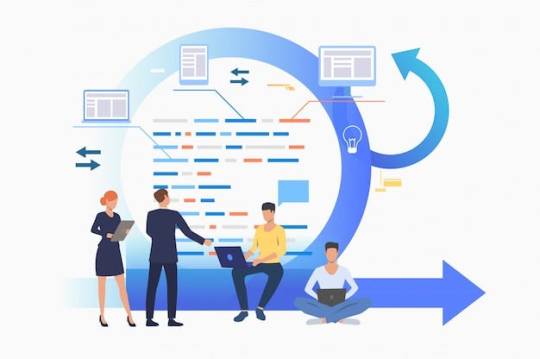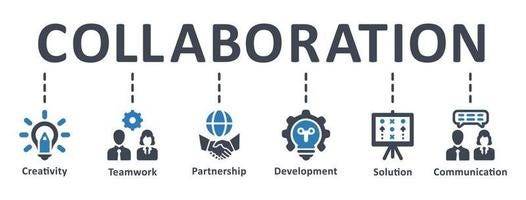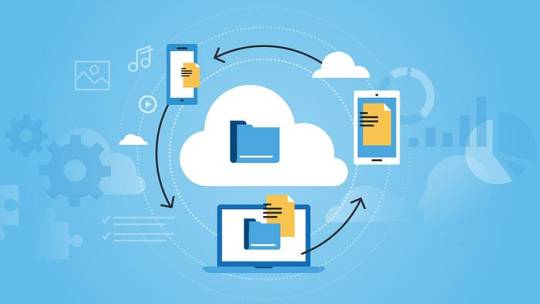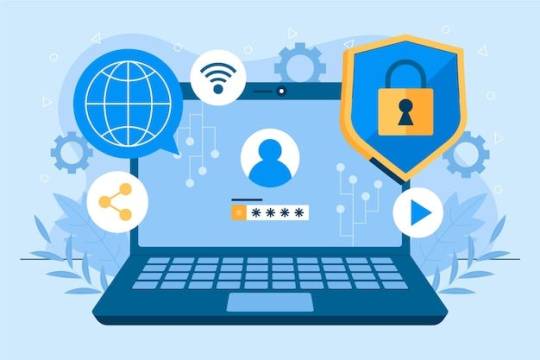#agile project management tool
Explore tagged Tumblr posts
Text
GLMS is a Microsoft Gold Partner specialist professional services company that focuses solely on the design, configuration, deployment, training, and support of Project Management solutions in Australia. They work around Microsoft Technologies and deliver digital transformations accordingly. GLMS specializes in consultancy services that leverage business technologies, such as Office 365, Project Online, Microsoft Project Server, and Microsoft SharePoint Server. Their goal is to establish cost-effective solutions tailored to best suit your business needs.
#resource management software#resource management tools#microsoft resource management#microsoft project accelerator#project for the web accelerator#project management tool#project management services#agile project management tool#microsoft project online migration#microsoft project management software#portfolio management software#product management software#microsoft project course#portfolio and project management#project cost management software#project and cost management#ms crm software
1 note
·
View note
Text
Hello Agile Enthusiasts! 👋 We want to hear from you about your experiences with Agile Project Management Tools. Your insights will help us enhance Vabro to better suit your needs. Cast your vote and share your thoughts! 🌟
🔗 Visit www.vabro.com to know more.
3 notes
·
View notes
Text
#Business Analyst Tools#BA Toolbox#Requirements Gathering#Business Analysis Templates#Process Modeling#Workflow Documentation#Stakeholder Management#Digital Transformation Tools#Business Analyst Resources#BA Frameworks#GQAT Tech BA Solutions#Agile BA Tools#Business Process Optimization#Productivity Tools for BAs#BA Best Practices#Proven Excellence#GQAT Tech Success Stories#QA Case Studies#Quality Assurance Achievements#Software Testing Results#Client Satisfaction#QA Best Practices#Project Excellence#Business Impact QA#Software Testing Portfolio#GQAT Testimonials#QA Metrics & Reporting#Trusted QA Services#Real-world QA Results#Quality Assurance Leadership
0 notes
Text
Unlock Strategic Success with Planview PPM Solutions by Winmill
In today’s fast-paced digital environment, organizations need more than just project management — they need a strategic approach to align every initiative with business goals. That’s where Planview Project Portfolio Management (PPM), delivered by Winmill PPM, makes a transformative impact. Winmill is a premier partner specializing in Planview PPM solutions, helping enterprises simplify complex portfolios, improve resource visibility, and drive better outcomes. Whether your focus is IT project governance, strategic planning, or agile transformation, Winmill tailors Planview's powerful tools to your specific needs. With Planview, organizations gain: ✅ Centralized Portfolio Management ✅ Real-Time Reporting and Dashboards ✅ Agile and Waterfall Integration ✅ Resource Optimization and Capacity Planning ✅ Improved PMO Efficiency Winmill stands apart by not just implementing software, but by empowering teams with strategy, training, and ongoing support to unlock the full value of their Planview investment. Why Choose Winmill for Planview Implementation?
20+ years of PPM experience
Certified Planview consultants
Proven success across industries including healthcare, finance, and government
Scalable solutions for organizations of all sizes Explore how Winmill can elevate your project execution and strategic alignment. 👉 Learn More: https://ppm.winmill.com/
#planview software#broadcom clarity ppm#winmillppm#clarity project management tool#marketing#agile software development#resources#software engineering#clarity ppm
0 notes
Text
#AI applications in agile and hybrid project management#Smart automation tools for efficient workflow execution#Real-world case studies of AI-driven project success#Spotify
0 notes
Text
Project Management in Pharmaceutical and Biotechnology
Table of Contents Project Management in Pharmaceutical and Biotechnology The Unique Challenges of Pharmaceutical and Biotechnology Projects Strategies for Effective Project Management 1. Cross-Functional Teams 2. Agile Methodologies 3. Risk Management 4. Stakeholder Engagement Case Study: The Development of COVID-19 Vaccines Conclusion Project Management in Pharmaceutical and…
#Agile Project Management#Project Management Best Practices#Project Management Certification#Project Management Software#Project Management Solutions#Project Management Strategies#Project Management Systems#Project Management Techniques#Project Management Tools#project management training
0 notes
Text
Remote Work Essentials: Tools and Tips for Success

With the onslaught of remote work, days are gone when companies required their workers to come to their offices daily. While working from home may not always be the most helpful and productive way to work, it offers much flexibility for efficient collaboration and effective task management. Working remotely requires the right tools and strategies that one must implement in order to succeed. In this blog, we will explore the must-have remote work tools, along with some actionable tips for getting things done.The Importance of Remote Work Preparedness
The Importance of Remote Work Preparedness
Remote work isn’t merely about logging in from home; it’s about creating a functional, productive, and collaborative workspace, no matter where you are.
Having proper tools in place enables seamless communication, task management, and data security. Equally important, having the right habits and best practices allows you to focus, be efficient, and partner with your team.

Remote Work Toolkit: Essential Tools for Success
Let’s dive into the key categories of tools you need to stay organized, productive, and connected while working remotely.
1. Project Management Tools

Remote teams thrive on clear structure and collaboration, making it possible to manage tasks and projects using collaborative tools. The project management tool is the heart of the team, where work can be assigned to someone, the status tracked, deadlines set, and communication facilitated.
Here are some top suggestions:
TeamCamp: A modern project management tool for remote teams, enabling task tracking, collaboration, and goal setting, direct from our blog on Best Project Management Tools for Remote Teams.
Trello: It is the Kanban board-based visual task management tool, perfect for organizing workflow.
ClickUp: A feature-rich platform that brings task tracking, team collaboration, and time management into one place
Asana: Great for project planning, tracking individual contributions, and ensuring deadlines are met.
2. Communication and Collaboration Tools

Strong communication is the cornerstone of remote work success. When in-person discussions are off the table, virtual communication tools step in to bridge the gap.
Popular options include:
Slack: Offers instant messaging, file sharing, and app integrations to keep teams connected.
Zoom: Ideal for video conferencing, webinars, and team meetings.
Microsoft Teams: A versatile communication tool combining chat, video calls, and Office 365 integrations.
Google Workspace (Google Meet, Chat, etc.): Provides seamless collaboration across Gmail, Docs, and Meet.
3. Time Management and Productivity Tools

Working from home comes with its fair share of distractions. Time management tools can help you focus, stay organized, and make the most of your day.
Top time management tools include:
Toggl Track: Helps you monitor how much time you spend on tasks.
Focus@Will: A productivity app that combines neuroscience and music to improve focus.
RescueTime: Tracks your daily activities to provide insights into how you spend your time.
Clockify: A free time-tracking app that helps you keep tabs on billable hours.
4. File Storage and Sharing Tools

In a remote setup, sharing and storing documents securely is crucial for smooth workflows. Cloud storage solutions make it easy to access files anytime, anywhere.
Some reliable options include:
Google Drive: Offers free storage and real-time collaboration on documents.
Dropbox: A cloud storage platform with file syncing and sharing capabilities.
OneDrive: Microsoft’s cloud solution that integrates with Office applications.
Box: A secure option for file sharing and collaboration, often used by enterprises.
5. Cybersecurity and Privacy Tools

When working remotely, safeguarding sensitive data and ensuring secure connections is critical. Cybersecurity tools help protect your devices and online activities from potential threats.
Key tools include:
VPNs (Virtual Private Networks): Services like NordVPN or ExpressVPN encrypt your internet connection, protecting your data.
Password Managers: Tools like LastPass or 1Password help manage secure credentials for all your accounts.
Antivirus Software: Options like Bitdefender or Kaspersky ensure your devices are protected from malware.
Two-Factor Authentication (2FA): Many platforms, including Google and Microsoft, offer built-in 2FA options for added security.
6. Wellness and Focus Tools

Burnout is a common challenge in remote work. Wellness and focus tools help you maintain mental and physical well-being while staying productive.
Examples include:
Headspace or Calm: Meditation apps to manage stress and enhance focus.
Stretchly: A tool that reminds you to take regular breaks during long work hours.
Habitica: A gamified app to help you build better habits and stay motivated.
Tips for Thriving in Remote Work
Having the right tools is half the battle — developing productive habits and a balanced routine is equally important. Here are some practical tips for remote work success:
1. Set Clear Boundaries
Define your working hours and communicate them with your team and family. This helps prevent overwork and ensures time for personal life.
2. Create a Dedicated Workspace
Set up a quiet and distraction-free area to work. A proper desk and ergonomic chair can improve posture and productivity.
3. Leverage Automation
Use automation tools like Zapier to integrate apps and reduce repetitive tasks, freeing up more time for critical work.
4. Overcommunicate
In remote work, it’s better to communicate too much than too little. Provide frequent updates on tasks, ask questions, and keep the team in the loop.
5. Take Regular Breaks
Follow the Pomodoro Technique or simply take short breaks to recharge. Stretch, hydrate, or step outside for fresh air.
6. Upskill Yourself
Use online platforms like Coursera or LinkedIn Learning to develop new skills relevant to your job. Remote work often requires tech-savvy professionals.
Frequently Asked Questions (FAQs)
1. What are the most important tools for remote work?
Essential tools include project management platforms like TeamCamp or Trello, communication tools like Slack or Zoom, and file-sharing solutions like Google Drive or Dropbox.
2. How can I stay motivated while working remotely?
Set daily goals, use productivity tools, and maintain a dedicated workspace. Also, ensure regular breaks and focus on self-care to prevent burnout.
3. How do I improve collaboration in remote teams?
Use tools like Slack for communication, Zoom for meetings, and project management software like Asana or ClickUp to ensure clarity and teamwork.
4. How do I maintain work-life balance in a remote setup?
Define clear working hours, create a separate workspace, and make time for hobbies, family, and relaxation.
5. How do I ensure data security while working remotely?
Use VPNs, enable two-factor authentication, and use antivirus software to protect your devices. Store files securely on trusted cloud platforms.
Author detail:
by Pratham Naik ( Project Manager , Content writer )
#project management#remote work#remote teams#agile project management#project management tool for remote team#task management#team management#project management software
1 note
·
View note
Text
10 Steps to Choose the Right Project Management Tool for Your Business

In today’s fast-paced business environment, efficient project management is key to achieving success. Selecting the right tool can greatly enhance your team’s productivity and effectiveness. This article presents ten essential steps to guide you in choosing the perfect project management tool to meet your business needs.
Identify Your Business Requirements:
Begin by clearly defining your business requirements. Understand the size of your projects, the number of team members, collaboration needs, and any specific features necessary for your workflow.
Consider User-Friendliness:
Opt for a project management tool that is intuitive and user-friendly. A tool that is easy to navigate and understand will ensure quicker adoption by your team.
Assess Collaboration Features:
Evaluate the collaboration features of the project management tool. Look for functionalities such as real-time collaboration, document sharing, and communication tools to enhance team interaction.
Scalability:
Choose a tool that can grow with your business. Ensure it is scalable to accommodate an increasing number of projects, users, and any evolving requirements.
Integration Capabilities:
Check for integration capabilities with other tools your team is already using, such as communication platforms, file-sharing services, or customer relationship management (CRM) systems.
Customization Options:
Every business has unique processes and workflows. Select a project management tool that offers customization options, allowing you to tailor the tool to your specific needs.
Cost and Value:
Consider your budget constraints and evaluate the value offered by each project management tool. Some tools may have a higher initial cost but provide better long-term value with advanced features and scalability.
Security Measures:
Security is paramount when managing projects, especially if sensitive information is involved. Ensure the project management tool adheres to industry-standard security protocols to protect your data.
Trial Period:
Take advantage of free trials or demo versions offered by project management tool providers. This allows you to assess the tool’s suitability and functionality within your business environment before making a commitment.
User Reviews and Recommendations:
Research user reviews and seek recommendations from industry peers. Understanding the experiences of other businesses can provide valuable insights into the practicality and effectiveness of a particular project management tool.
By focusing on customization, scalability, user-friendliness, and continuous support, Tecnolynx app development company aims to empower clients with tools that not only meet yourcurrent needs but also evolve alongside the business growth and changing requirements.
#Project management software#Project planning tools#Task management software#Team collaboration tools#Agile project management#Kanban boards#Gantt charts#Project scheduling software#Resource management tools#Project management tool comparison
0 notes
Text
#BugHerd#Website feedback tool#Project management tool#Web development process#Streamline web development#Bug tracking tool#Collaboration tool#Agile development#Web design feedback#User experience (UX)#User interface (UI)#Developer tools#Design feedback#Team collaboration#Productivity tools#Efficient workflow#Quality assurance (QA)
0 notes
Text
Having jira does not make you agile
The same as buying a baseball cap doesn’t make you a baseball player. One of the biggest misconceptions when we think about migrating to agile is to expect faster delivery. Faster delivery of the same size of projects that we are used to have. Agile is not for faster. It is for better. The expectation that we need to have from any Agile framework is to become more efficient while delivering…
0 notes
Text
Mastering Project Management: Essential Skills for Success in the 21st Century
Discover the essential skills every project manager needs to master in the 21st century! From leadership to risk management, stay ahead with our expert insights. Don't miss out—subscribe now for more tips and updates on professional development!
Effective project management is more crucial than ever in today’s fast-paced and ever-evolving business landscape. Whether you’re steering a small team or overseeing a large-scale initiative, the ability to lead, communicate, manage time, solve problems, and mitigate risks can make or break your project’s success. But what exactly does it take to excel in this multifaceted discipline? And how can…
#21stcenturyprojects#Agilepractices#communicationstrategies#LeadershipSkills#Leanmethodologies#modernmanagementtools#PMPcertification#PRINCE2certification#problemsolvingtechniques#ProfessionalDevelopment#projectmanagement#remoteteammanagement#riskmanagementstrategies#timemanagementtips#21st century project management#Agile practices#communication#Empowered Journey#essential skills#Hafsa Reasoner#leadership#Lean methodologies#modern project management tools#PMP certification#PRINCE2 certification#problem-solving#professional development#project management#remote team management#risk management
0 notes
Text
Agile Transformation: Revolutionizing Work Culture
Organizations in today's energetic economy are always looking for new methods to adapt and succeed. One such method gaining popularity is Agile Transformation. This article explores the significance of Agile Transformation, its principles, implementation steps, challenges, success stories, and how to measure its success.
Understanding the Need for Agile Transformation
Challenges in Traditional Work Environments
Traditional work methodologies are often difficult in innovation and adaptability. Hierarchical structures, rigid processes, and isolated departments can delay the progress and responsiveness to market changes.
Benefits of Agile Transformation
Agile Transformation offers a plan and shift by promoting collaboration, flexibility, and continuous improvement. It enables organizations to respond swiftly to customer needs, reduce time-to-market, and foster a culture of innovation.
Key Principles of Agile Transformation
Customer Collaboration
Putting the customer at the center of the development process ensures that products and services align with their evolving needs and preferences.
Adaptive Planning
Agile emphasizes adaptability over strict adherence to predefined plans. It encourages teams to respond to change quickly and effectively.
Iterative Development
Breaking projects into smaller, manageable iterations allows for regular feedback and adjustments, leading to incremental improvements and reduced risk.
Steps to Implement Agile Transformation
Assess Current State
Evaluate existing processes, structures, and culture to identify areas for improvement and readiness for Agile Transformation.
Define Vision and Goals
Establish a clear vision and goals for the transformation, ensuring alignment with organizational objectives and stakeholder expectations.
Build Cross-Functional Teams
Form multidisciplinary teams with diverse skills and perspectives to foster collaboration and innovation.
Implement Agile Practices
Introduce Agile methodologies such as Scrum, Kanban, or Lean to streamline processes, enhance transparency, and promote continuous delivery.
Overcoming Common Challenges in Agile Transformation
Resistance to Change
Address resistance by communicating the benefits of Agile Transformation, providing training and support, and leading by example.
Lack of Understanding
Educate employees at all levels about Agile principles and practices to ensure widespread adoption and commitment.
Scaling Issues
Address scalability challenges by adapting Agile frameworks to fit the organization's size, complexity, and industry requirements.
Measuring Success in Agile Transformation
Key Performance Indicators
Track metrics such as velocity, cycle time, customer satisfaction, and employee morale to assess the impact of Agile Transformation and identify areas for improvement.
Continuous Improvement
Embrace a culture of continuous learning and adaptation, regularly reviewing processes and practices to optimize performance and deliver greater value to customers.
Conclusion
Agile Transformation is not just a buzzword; it's a strategic imperative for organizations looking to thrive in today's dynamic marketplace. By embracing Agile principles, organizations can foster innovation, improve responsiveness, and achieve sustainable growth. However, success requires commitment, collaboration, and a willingness to embrace change.
FAQs
What is Agile Transformation?
Agile Transformation is the process of adopting Agile principles and practices across an organization to improve flexibility, collaboration, and responsiveness.
Why is Agile Transformation important?
Agile Transformation enables organizations to adapt quickly to changing market conditions, deliver value to customers more efficiently, and foster a culture of innovation.
How long does Agile Transformation take?
The duration of Agile Transformation varies depending on the size, complexity, and readiness of the organization. It is a continuous journey instead of a single event.
How can organizations measure the success of Agile Transformation?
Success in Agile Transformation can be measured using key performance indicators such as velocity, cycle time, customer satisfaction, and employee engagement.
What are some common challenges in Agile Transformation?
Common challenges in Agile Transformation include resistance to change, lack of understanding, and scalability issues.
Tags: Agile Transformation Tags, Digital Innovation, Change Management, Agile Methodologies, Agile Tools, Digital Transformation Strategies, Agile Practices, Organizational Change Processes AgileLeadership DigitalRevolution InnovationInBusiness
0 notes
Text
PPM and Agile Project Management Software | Winmill PPM
At Winmill we are delivering premier PPM solutions. North Americas top experts in Gartners highest-rated PPM tools from Planview & Broadcom.
To know more info: https://ppm.winmill.com/contact-us/
#winmillppm#planview software#broadcom clarity ppm#software engineering#clarity project management tool#agile software development
1 note
·
View note
Text
Yes, it is feasible to implement Agile methodologies like Scrum or Kanban without relying on a project management tool, especially for small teams or simple projects. Agile principles emphasize individuals and interactions over processes and tools, so teams can use physical boards, sticky notes, or simple spreadsheets to manage their work. However, project management tools can greatly enhance the efficiency and effectiveness of Agile practices by providing features such as task tracking, collaboration, backlog management, and reporting. They offer centralized platforms for teams to plan, track, and communicate, especially in larger or distributed teams where coordination becomes more complex. Some commonly used project management tools for Agile methodologies include Trello, Jira Software, Vabro, Asana, and Monday.com. These tools offer various features tailored to Agile practices and can streamline project management processes, but their necessity depends on the specific needs and preferences of each team and project.
1 note
·
View note
Text
Agile Project Management Tools: Jira - Agile at Its Best
Jira is a standout among Agile Project Management Tools, offering comprehensive support for both Scrum and Kanban methodologies. Its robust customization options and integration capabilities make it a top choice for teams seeking agile excellence.
To know more:
0 notes
Text
Project Management in the Manufacturing Sector
Table of Contents Project Management in the Manufacturing Sector The Importance of Project Management in Manufacturing Key Project Management Methodologies in Manufacturing Waterfall Methodology Agile Methodology Lean Manufacturing Case Studies: Successful Project Management in Manufacturing Toyota Production System General Electric’s Six Sigma Initiative Statistics Highlighting the Impact of…
#Agile Project Management#Project Management Best Practices#Project Management Certification#Project Management Software#Project Management Solutions#Project Management Strategies#Project Management Systems#Project Management Techniques#Project Management Tools#project management training
0 notes